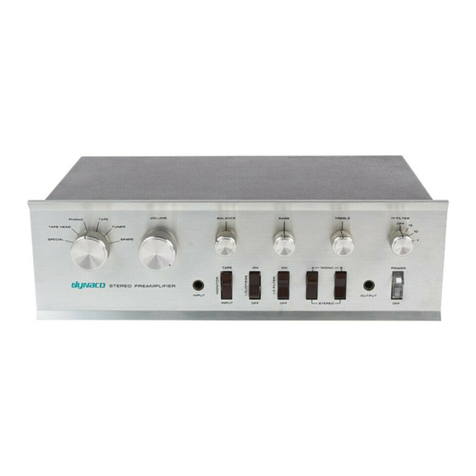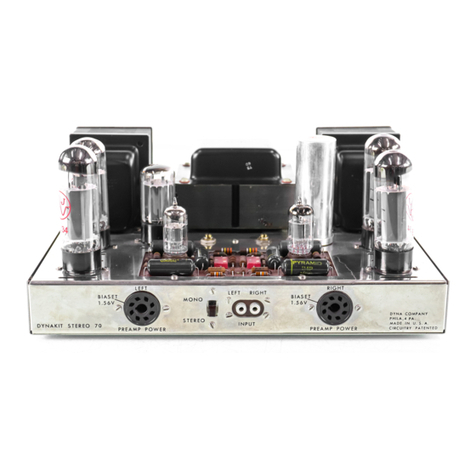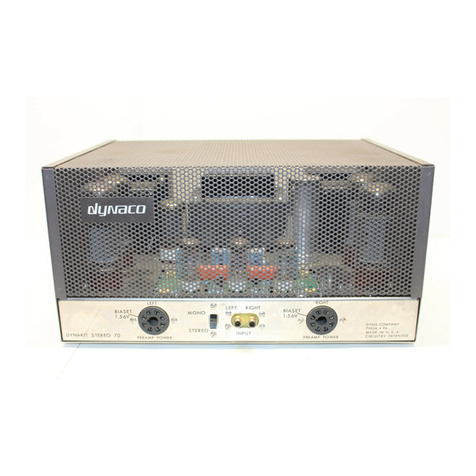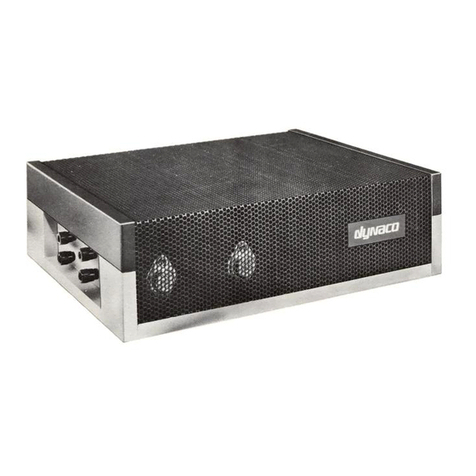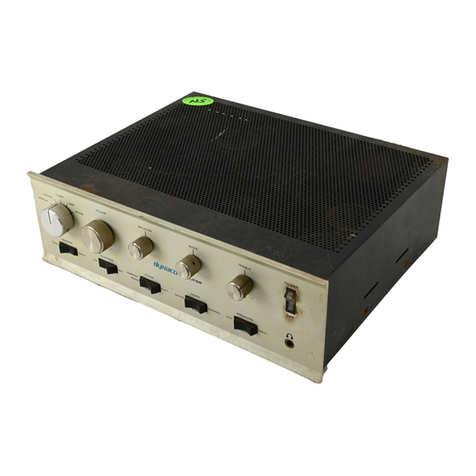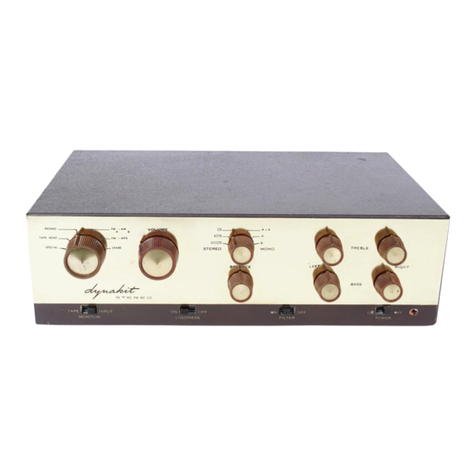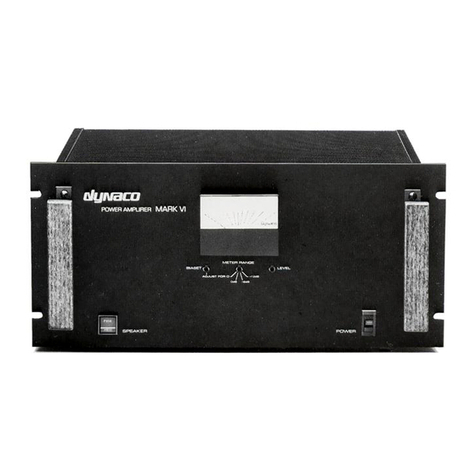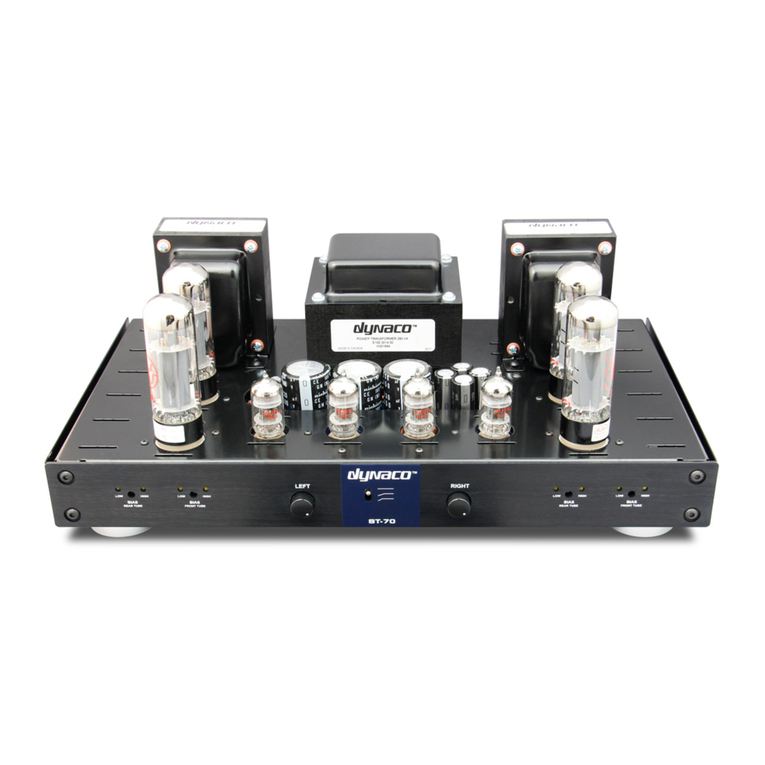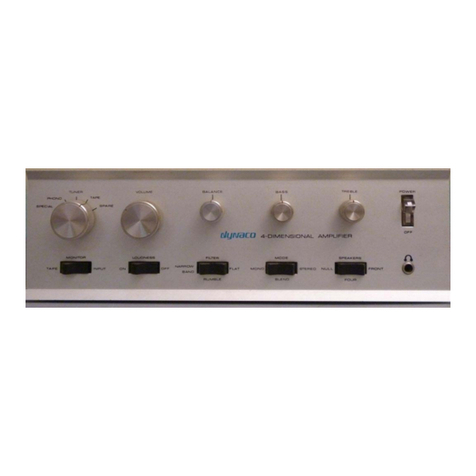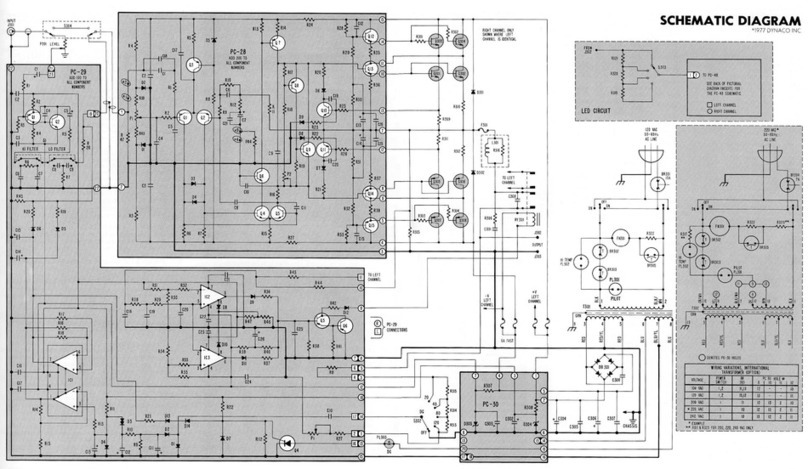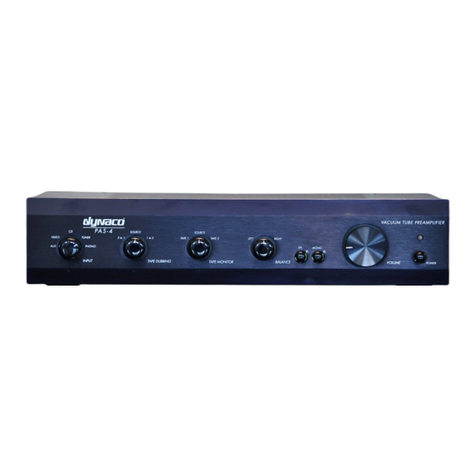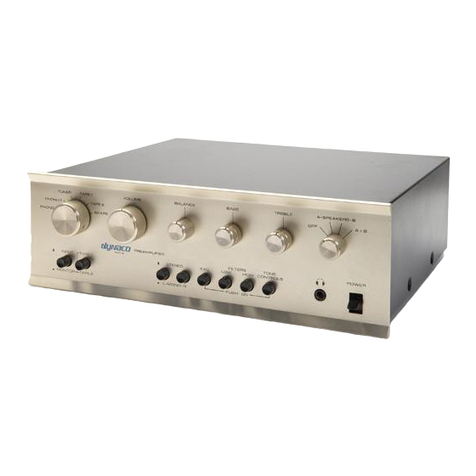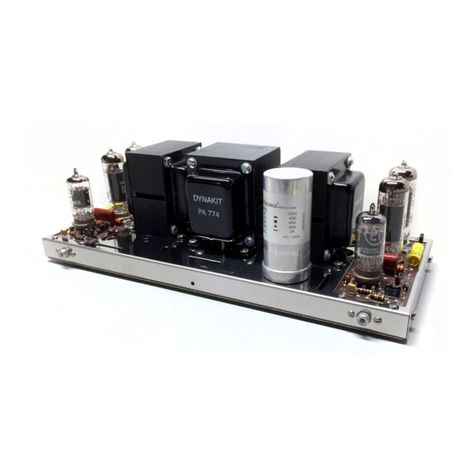DYNACO ST-70 - DRIVER 6GH8 ECF82
INSTALLATION AND USER MANUAL FOR THE AB-Q-ST70 AUTO BIAS MODULE
Introduction:
This module has been designed to maintain a constant bias voltage through all power output tubes for
your ST70 stereo power amp.
The bias is kept at a constant level on the output tubes, irrespective of the signal level.
Please note. The preset bias level for this AB-Q module, see below for details, will differ depending on
whether your ST70 uses the EL34 power tubes.
6.3V AC windings for tubes are not grounded!
Benefits:
The advantage of using the AB-Q module is that it will extend output tube life, in a lot of cases it will also
improve the sound and last but not least, you will never have to worry about adjusting the bias again.
•Instead of a pair of output tubes being biased together, now all four output tubes are
individually biased for greater control and stability
•No need to keep an eye on and/or adjust the bias of the output tubes
•Significant extension of the output tubes life
•Bias is not influenced by the input signal
•Undistorted and improved sound for a great listening experience
•Reduction in hum and noise level of the amp
•No maintenance or additional adjustments are required after the initial setup
•Improved overall operation of the amp due to the reduction in the danger of a tube red plating
•The AB-Q ensures that bias is kept at the pre-set value (see Initial Setup) even as the tubes age
•The AB-Q comes with a soft start feature, which slowly brings up bias to each output tube
Quick Overview:
The AB-Q module has four blue LED’s, one for each output tube, which when lit, indicate that bias is at
the correct level and that all is good with each tube.
Should any of these blue LED’s go out or not go on after power up, means that here is an issue with that
given output tube and that the tube in question needs to be immediately replaced.
When the amp is powered up, at first a red LED will be on, indicating that there is power to the AB-Q
module. The red LED will go out after about 20s.
After a further delay of between 40-50s, each of the blue LED’s should come on indicating that the bias is
now set and stable for each output tube. The amp is now ready to use.
